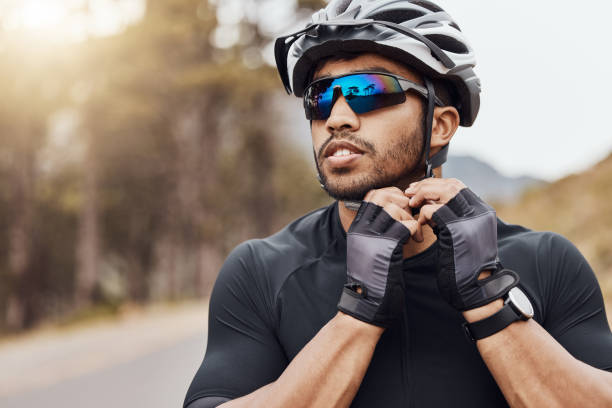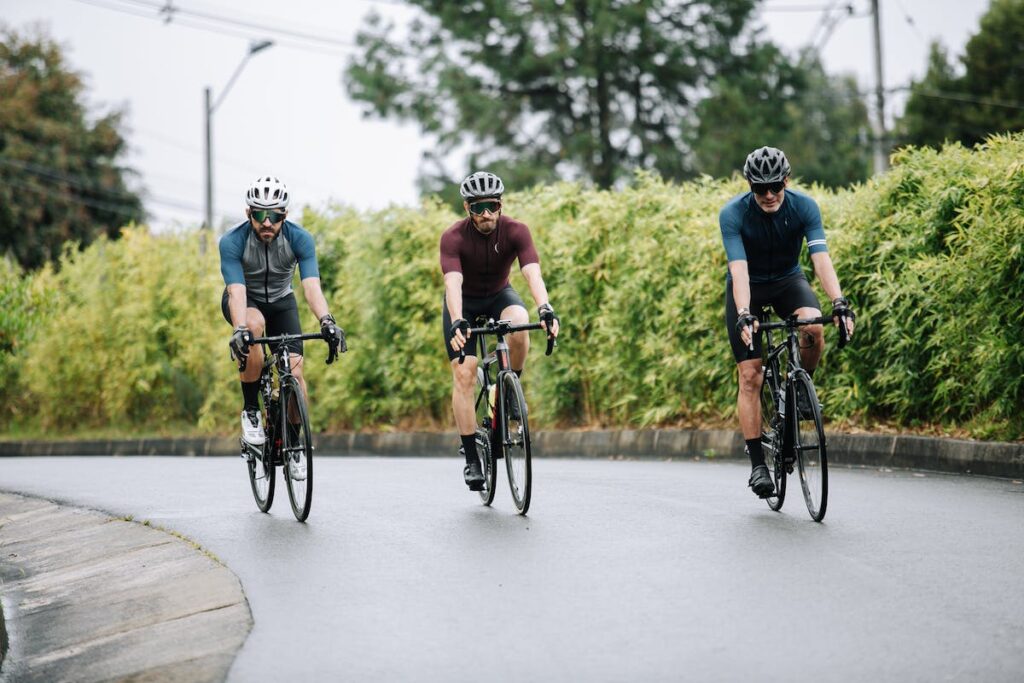Nothing is better than getting on the road and taking an hour-long bike ride. Of course, a lot of barriers could prevent enjoyment. From roadside debris and potholes to pedestrians and other drivers. Before you get on the road, you must take the appropriate safety measures. The ideal way to achieve this is by making a purchase of dependable sunglasses. When it comes to defending yourself against the risks of driving, having the appropriate glasses can make a world of difference.
There are a few important elements to take into account when looking for the best cycling glasses with prescription lenses for your needs.
This guide attempts to assist you in selecting the best cycling prescription glasses:
1. Lens Quality:

The type of lens material should be taken into account while buying glasses. Impact-resistant lenses like those constructed of polycarbonate or Trivex are strongly advised since they offer exceptional durability and protection. Furthermore, lenses with a scratch-resistant coating are the best since they can keep their clarity over time, despite regular use.
2. Prescription Compatibility:

When looking for glasses, it’s necessary to make sure the frames can meet your unique prescription needs. Many lens alternatives, including single vision, bifocals, and progressive lenses, are available from some companies. When ordering, you might need to include information about your prescription, such as your pupillary distance (PD). It’s also crucial to make sure the eyeglasses you choose are offered in the face-fitting size. Too-small or too-large frames may not offer the optimum vision correction or may even be uncomfortable.
3. Lens Tint and Technology:

It’s important to choose cycling glasses with lens tint based on the lighting conditions you frequently ride in. While tinted or polarised glasses are great for bright settings, decreasing glare and boosting contrast, clear lenses are suitable for low-light or night cycling. Cycling near water or other reflective surfaces is a great place to use polarised lenses. Consider photochromic lenses as well, as these automatically change their hue according to the surrounding light. This makes them a flexible option because they may be used in a variety of lighting situations.
4. Frame Design:

It’s imperative to select a frame for your cycling glasses that gives a snug and comfortable fit. To guarantee a customized fit, look for features like movable nose pads and temple arms. This can lessen the chance of the glasses slipping or shifting during the ride, which can be annoying and uncomfortable. It’s crucial for cyclists who spend a lot of time on their bikes to have frames composed of lightweight materials like titanium or nylon to reduce fatigue during long rides. A frame’s covering and resistance to wind, dust, and debris can also be improved by a wrap-around design.
5. Ventilation and Anti-Fog Features:

To avoid fogging during arduous rides, cycling glasses should have adequate airflow. Your body produces heat and moisture when you are riding, which can cause your glasses to fog up and impair your vision. This can be particularly troublesome when it’s humid outside or while you’re pedaling hard. Look for eyewear with ventilated lenses or anti-fog coatings to reduce fogging. Vented lenses allow air to flow around them, which might lessen the likelihood of fogging. To help minimize moisture buildup, anti-fog coatings can also be added to the lenses.
6. Wraparound Design:

When selecting cycling glasses, it’s particularly important to select wraparound models that offer a wide field of vision and shield your eyes from wind, dust, and debris. This design can lessen the chance of side distractions while cycling and increase your overall safety. Wraparound glasses can help you see more of your surroundings by giving you a broad field of vision, which is beneficial when cycling in congested or busy places. Wraparound sunglasses can also shield your eyes from wind, dust, and other particles, which can be dangerous when cycling quickly. By doing so, you can keep your eyes from becoming irritated or hurt and keep your attention on the road. Selecting eyewear with a wraparound style will allow you to enjoy a safe ride without distractions.
7. UV Protection:

To protect your eyes from damaging ultraviolet radiation, it’s important to look for 100% UV protection when purchasing eyewear. Long periods of time spent outside require this function since UV rays can harm your eyes, leading to cataracts and macular degeneration. UV rays can harm your eyes even on cloudy days because they can pass through them. Therefore, it’s crucial to select sunglasses that offer complete UV protection. To find out if the glasses offer UV protection, look at the label or product description.
FAQs:
Is a photochromic lens good for cycling?
Of course, it is. Photochromic lenses can be a good choice for cycling, as they automatically adjust to changes in light conditions.
Why do cyclists wear big sunglasses?
Cyclists often wear big sunglasses for a number of reasons. But the most important reason is, big sunglasses can provide a wide field of view, which can help cyclists to see more of their surroundings and stay aware of potential dangers.
What color lens is best for bright days?
For bright days, it is reasonable to choose lenses that provide sufficient safety from UV radiation and reduce glare. Gray lenses are a favored choice for bright days, as they can help to reduce brightness without misinterpreting colors.
Conclusion:
It’s important to seek professional advice when selecting cycling glasses so they can make personalised suggestions based on your unique prescription and cycling needs. Your prescription, the cycling environment, and your personal tastes can all be taken into account by an optician or optometrist as they assist you in selecting the ideal frame and lenses for cycling. Additionally, they may provide you advice on the optimal lens materials and coatings, such as anti-glare coatings or impact-resistant materials, based on your requirements. By consulting a professional, you can make sure that your cycling glasses offer crystal-clear vision, sufficient protection, and the best level of comfort, assisting you in remaining safe and concentrated during your ride.

